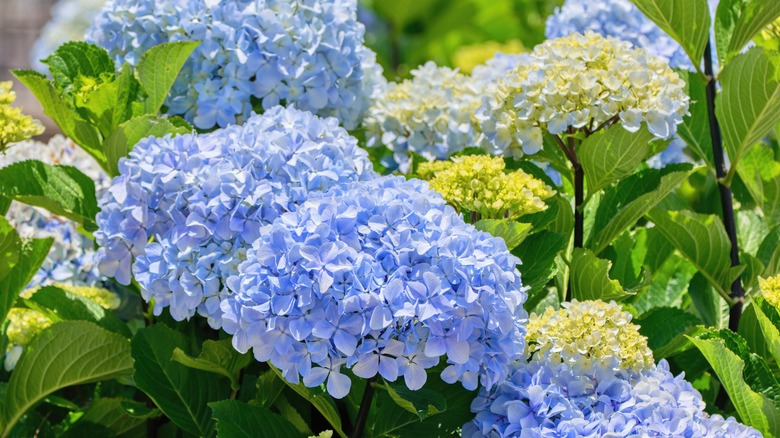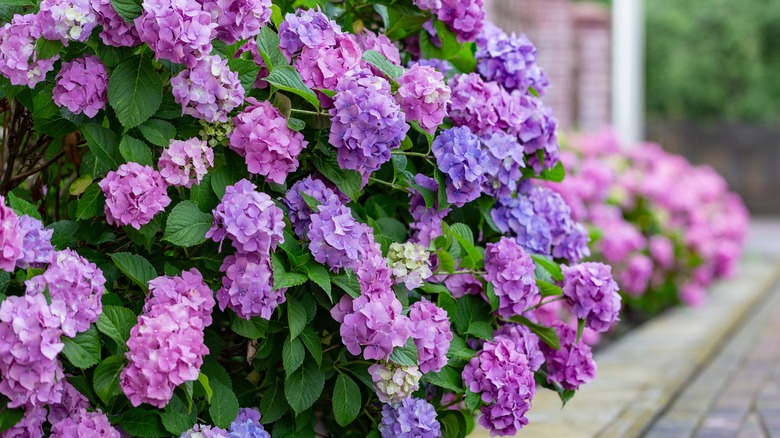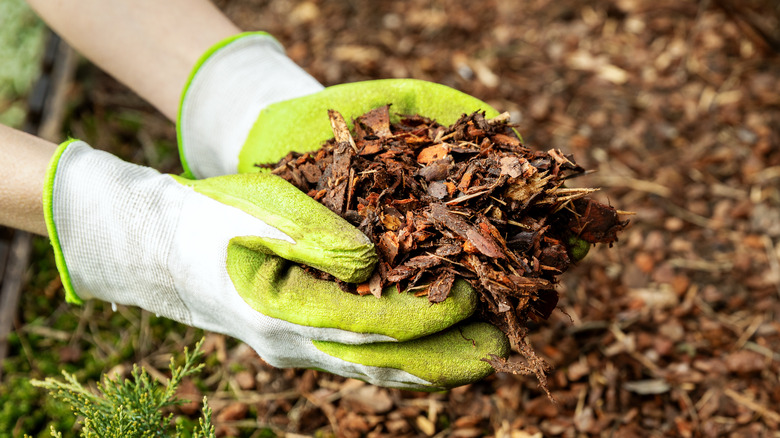Hydrangeas Are The Perfect Choice For Picky Clay Soil
Clay soil is a common challenge that many gardeners face when it comes to growing plants. Its heavy texture and moisture-retaining properties can make it difficult for some foliage to thrive. However, the hydrangea is perfect for picky clay substrate because it can tolerate heavy, moisture-rich soils.
Hydrangeas may even benefit from clay soil without requiring additional alterations, though amending the soil can help this resilient flower, and others, flourish in the long run. Its moisture-retaining properties ensure that hydrangeas receive enough water, which reduces the need for frequent thirst quenching. To allow for even the most particular plants thrive, and also help out your hydrangeas, there are a few things you can do along the way. Consider creating a raised bed to improve drainage and prevent waterlogging of the roots. Digging a wide area larger than the root ball provides ample space for root growth in compacted clay soil. Additionally, tilling and aerating the soil can enhance its quality by reducing the overall soil density, which allows for better drainage. Lastly, applying a layer of mulch after tilling helps protect the soil from erosion and compaction.
How to work with clay soil
To properly plant hydrangeas in finicky clay soil, begin by digging a hole that is twice the size of the root ball. This will allow the roots to easily penetrate the clay soil and establish a strong foundation. When amending the soil, remember that a little goes a long way. To maintain a good soil-to-clay balance, and also prevent excess moisture accumulation at the roots, don't exceed more than 5 to 10% of any additional organic mix-ins. To boost the nutrients and clay soil structure, try using compost from healthy trees. This will improve soil quality over time, which will benefit your hydrangeas in the long run.
When planting hydrangeas in clay soil, you'll want to choose a sunny location so that you can take advantage of the soil's moisture-retaining properties. To support your hydrangeas root development and reduce transplant shock, shade the plant for a month or two after planting. The color of hydrangea flowers also depends on the soil's acidity level. Alkaline soil typically yields lovely pink flowers, while neutral soil enriched with organic matter can produce purple blooms. If you're looking for blue blooms, you'll want your soil to be acidic, so be prepared to mulch. Adding organic matter is the easiest, though lengthier, way to achieve acidic soil without the use of chemicals.
Make sure you're watering correctly
Clay soil forms a dry crust on the surface while retaining moisture underneath. To maintain the perfect moisture level for hydrangeas, make sure to regularly check the soil by inserting a stick to gauge the moisture level below the surface. Watering should be done when the soil has dried more than an inch, striking a balance to avoid overwatering and prevent waterlogged roots. Hydrangeas thrive in moist conditions, but not overly saturated ones. So if moisture is detected at a depth of 2 to 3 inches below the surface, it's best to wait a few more days before watering your plants. If you really want to better understand your plant's requirements, then don't be afraid to get your hands dirty and feel the soil with your fingers.
Remember that mulching with natural and organic materials, like pine bark, will not only help preserve moisture in the clay soil but will also regulate the temperature and create a better-growing environment for your blooms


